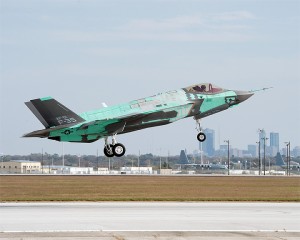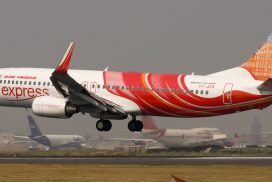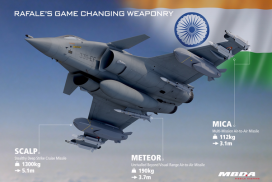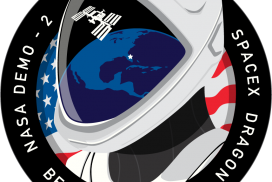
F-35A
Lockheed Martin’s first optimized conventional takeoff and landing (CTOL) F-35 Lightning II fighter made its inaugural flight on Saturday, Nov. 14, the fourth F-35 to begin flight operations.
Piloted by Lockheed Martin test pilot David “Doc” Nelson, the F-35A, called AF-1, left Lockheed Martin’s Fort Worth plant and flew to 20,000 feet and Mach 0.6. Nelson raised and lowered the landing gear, performed 360-degree rolls and lifted the nose to 20 degrees angle of attack during an 89-minute flight. AF-1 was built on the same production line as the 31 Low Rate Initial Production aircraft now in assembly. The aircraft incorporates many evolutionary improvements and updates derived from the test program of AA-1, the first F-35. AF-1 joins two F-35B short takeoff/vertical landing variants currently in flight test.
“The initial flight of the first optimized CTOL aircraft represents a significant achievement for the program and sets the stage for what’s promising to be a successful flight test program,” said Maj. Gen. C.D. Moore, deputy program executive officer for the Joint Strike Fighter Program Office.”We are excited to see AF-1 taking flight, as it portends a bright CTOL future for the USAF and the partner nations. The hard work on the production line and the flight line has paid off, and the workers deserve a hearty congratulations.”
Doug Pearson, Lockheed Martin vice president for F-35 test and verification, said, “AF-1 is one of the most important aircraft in our test fleet because knowledge gained from its use expanding the flight envelope will benefit the other two variants, and every F-35 ever built. AF-1 is also the first F-35 to roll off our moving assembly line, having achieved the maximum production speed of 50 inches per hour during a trial high-speed assembly sequence. The moving assembly line, designed to improve production quality and speed, is the first ever for a modern fighter.”
F-35B
The first Lockheed Martin F-35B Lightning II short takeoff/vertical landing (STOVL) stealth fighter arrived Sunday at Naval Air Station Patuxent River, Md., where it will conduct its first hovers and vertical landings. The ferry flight initiates a sequence of F-35 arrivals at Patuxent River this year and next.
Piloted by Lockheed Martin F-35 Chief Test Pilot Jon Beesley, the F-35B flew from Fort Worth, Texas, to Patuxent River by way of Dobbins Air Force Base in Georgia. Beesley landed on the Patuxent runway Sunday at 12:46 p.m. EST.
“We have high confidence in the capabilities of this aircraft, and we fully expect that it will meet or exceed the expectations of our customers,” said Dan Crowley, Lockheed Martin executive vice president and F-35 program general manager. “At Patuxent River, this aircraft will continue the process of validating our revolutionary STOVL propulsion system through a series of short takeoffs, hovers and vertical landings.”
The aircraft will be supported at Patuxent River by the F-35 Autonomic Logistics Information System (ALIS) and will be monitored by the Lockheed Martin F-35 Sustainment Operations Center in Fort Worth. Known as BF-1, the aircraft is the first F-35 to be sustained by ALIS – the worldwide support system that will monitor the prognostics and health of F-35s around the globe to ensure mission readiness.
The F-35B will replace U.S. Marine Corps AV-8B STOVL fighters, F/A-18 strike fighters and EA-6B electronic attack aircraft. The United Kingdom’s Royal Air Force and Royal Navy and the Italian Air Force and Navy will also employ the F-35B.
The F-35 Lightning II is a 5th generation fighter, combining advanced stealth with fighter speed and agility, fully fused sensor information, network-enabled operations, advanced sustainment, and lower operational and support costs. Lockheed Martin is developing the F-35 with its principal industrial partners, Northrop Grumman and BAE Systems. Two separate, interchangeable F-35 engines are under development: the Pratt & Whitney F135 and the GE Rolls-Royce Fighter Engine Team F136.



